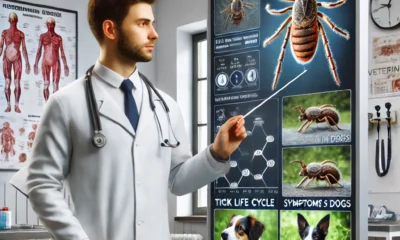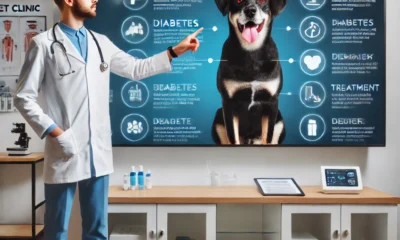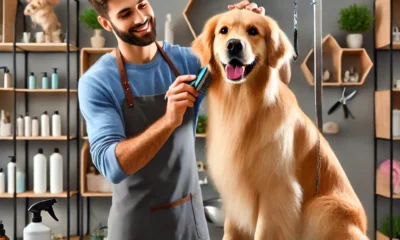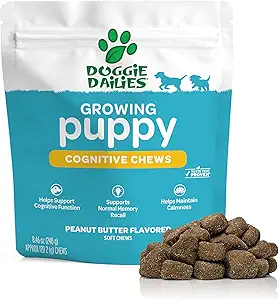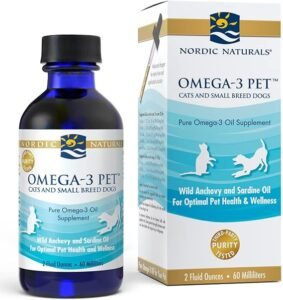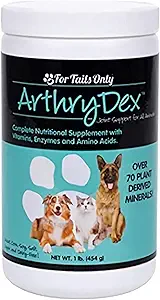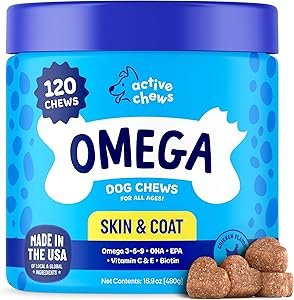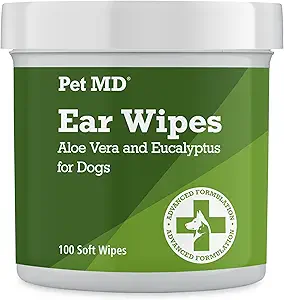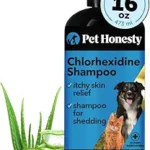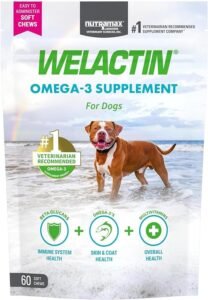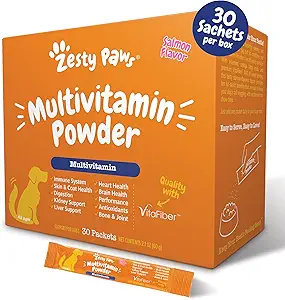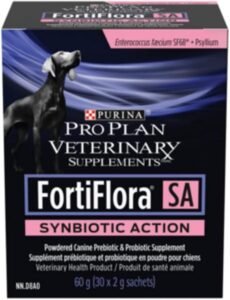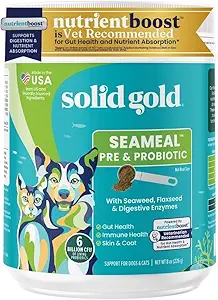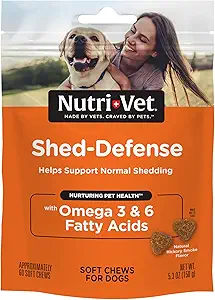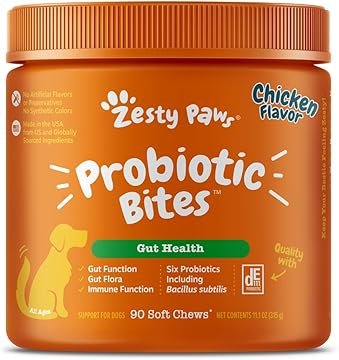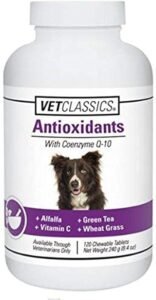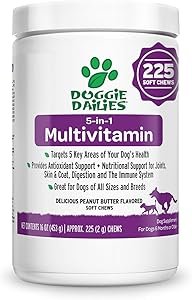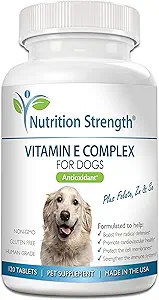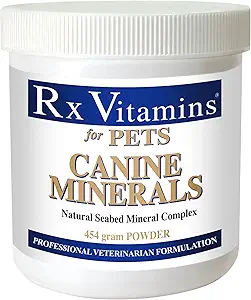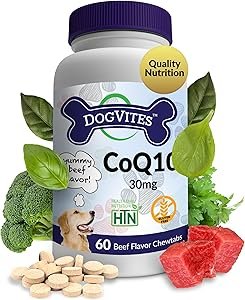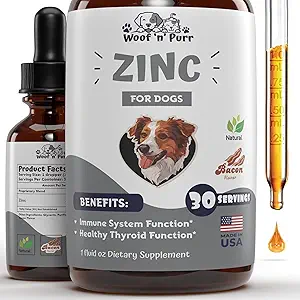Experts Nutritions
Seizures in Dogs: Causes, Symptoms, and Treatment

Understand The Topic

Seizures in dogs can be a frightening experience for pet owners. These episodes, which result from abnormal brain activity, can manifest in various ways, from mild twitching to full-body convulsions. Understanding the causes, symptoms, and treatment options can help dog owners provide the best possible care for their pets.
For more information regarding 4 seasonal cxcercieses of all dog breeds recommended by the doctors and experts,you can visit our youtube channel:
What Are Seizures in Dogs?
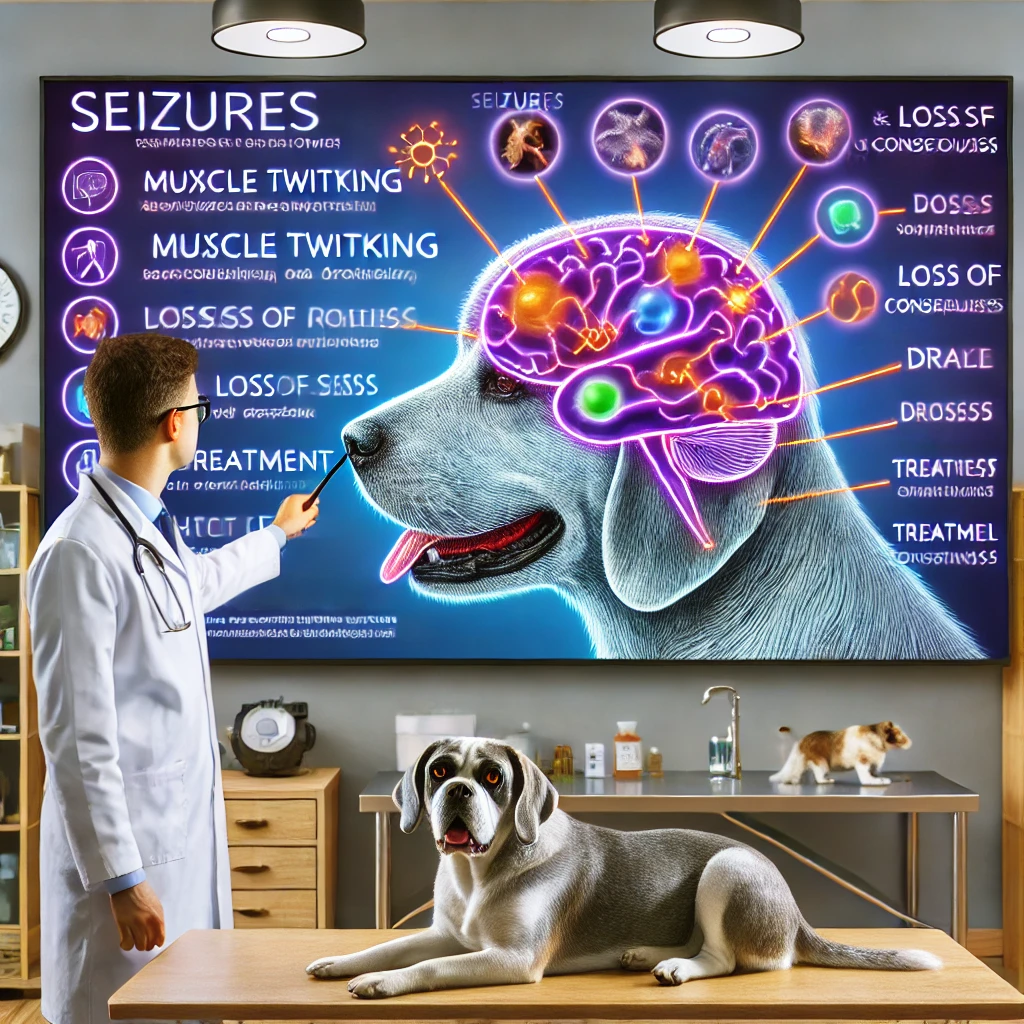
A seizure, also known as a convulsion or fit, is a sudden, uncontrolled burst of electrical activity in the brain. Seizures can be classified into different types based on their severity and duration:
- Generalized (Grand Mal) Seizures:
- Affect the entire body and usually last between a few seconds to a couple of minutes.
- Focal Seizures:
- Affect only one part of the body and may be less noticeable.
- Cluster Seizures:
- Occur in multiple episodes within a short period.
- Status Epilepticus:
- A life-threatening condition where a seizure lasts for more than five minutes or occurs in rapid succession.
Types of Seizures in Dogs

Seizures in dogs can vary based on their causes, symptoms, and severity. Below are the main types of seizures seen in dogs:
1. Generalized (Grand Mal) Seizures
- The most common type of seizure in dogs.
- Affects both sides of the brain and the entire body.
- Symptoms include muscle spasms, loss of consciousness, paddling legs, and drooling.
- Can last from a few seconds to minutes.
2. Focal (Partial) Seizures
- Affects only a part of the brain and one side of the body.
- Symptoms may include twitching, abnormal head movements, or one limb jerking.
- The dog may remain conscious or become confused.
- Can progress into a generalized seizure.
3. Psychomotor Seizures
- Also known as “Complex Partial Seizures.”
- A dog may display strange behaviors like biting at the air, chasing its tail, or attacking invisible objects.
- Lasts about 1–2 minutes.
- Often mistaken for a behavioral issue rather than a seizure.
4. Cluster Seizures
- Multiple seizures occur within a 24-hour period.
- The dog may regain consciousness between seizures but remains at high risk.
- Requires emergency veterinary care to prevent life-threatening conditions.
5. Status Epilepticus
- A life-threatening condition where a seizure lasts more than 5 minutes or the dog has repeated seizures without regaining consciousness.
- Can lead to brain damage or death if not treated immediately.
- Requires urgent veterinary intervention with medications like diazepam or phenobarbital.
6. Reactive Seizures
- Occur due to external factors such as toxins, metabolic disorders, or low blood sugar.
- Common causes: poisoning, liver disease, or electrolyte imbalances.
- Can be reversed if the underlying cause is treated.
- 💡 Key Takeaway: If your dog experiences any type of seizure, monitoring the frequency, duration, and symptoms is essential. Always consult a veterinarian for proper diagnosis and treatment.
Causes of Seizures in Dogs

Seizures can be caused by various underlying conditions. Some of the most common causes include:
- Idiopathic Epilepsy:
- A genetic disorder with no identifiable cause, often diagnosed in young to middle-aged dogs.
- Brain Tumors:
- Can interfere with normal brain function, leading to seizures.
- Toxicity:
- Ingestion of harmful substances such as chocolate, xylitol, pesticides, or household chemicals.
- Metabolic Disorders:
- Low blood sugar (hypoglycemia), liver disease, or kidney failure can trigger seizures.
- Infections and Inflammation:
- Conditions like meningitis, encephalitis, or distemper may cause neurological symptoms, including seizures.
- Head Trauma:
- Injuries to the head can lead to seizures due to brain damage.
Symptoms of Seizures in Dogs

Seizures can present differently in each dog, but common signs include:
- Sudden collapse or loss of consciousness
- Muscle twitching, jerking, or paddling motions
- Drooling or foaming at the mouth
- Uncontrollable urination or defecation
- Stiffening of the body
- Temporary confusion, disorientation, or restlessness before and after the seizure (pre-ictal and post-ictal phases)
What to Do If Your Dog Has a Seizure

If your dog experiences a seizure, follow these steps:
- Stay Calm:
- Panicking can make the situation worse for both you and your dog.
- Keep Your Dog Safe:
- Move any nearby objects to prevent injury but do not attempt to restrain your dog.
- Time the Seizure:
- If the seizure lasts more than five minutes, seek emergency veterinary care.
- Do Not Put Anything in Their Mouth:
- Dogs do not swallow their tongues during seizures, and attempting to open their mouth can cause injury.
- Provide Comfort Afterward:
- Once the seizure stops, offer a quiet, dark, and comfortable space for your dog to recover.
Diagnosis and Treatment Options

If your dog has a seizure, a veterinarian will likely perform diagnostic tests such as:
- Blood tests to check for metabolic disorders
- MRI or CT scans to identify structural brain abnormalities
- Spinal tap to detect infections or inflammation
Treatment Options:
- Antiepileptic Medications:
- Drugs such as phenobarbital, potassium bromide, and levetiracetam can help manage seizures.
- Dietary Changes:
- Some dogs benefit from ketogenic diets or specific prescription foods.
- Treating Underlying Conditions:
- If a specific cause is identified (e.g., liver disease, toxins), addressing that issue may reduce seizures.
- Lifestyle Modifications:
- Reducing stress, maintaining a consistent routine, and avoiding known triggers can help prevent seizure episodes.
Breed Predisposition to Seizures

Certain dog breeds are more prone to seizures, particularly those with a genetic predisposition to epilepsy. Some of these breeds include:
- Labrador Retriever
- Golden Retriever
- Border Collie
- German Shepherd
- Poodle
- Boxer
- Siberian Husky
- Beagle
Vitamins & Supplements for Seizure-Prone Dog Breeds
This table categorizes Labrador Retrievers, Golden Retrievers, Border Collies, German Shepherds, Poodles, Boxers, Siberian Huskies, and Beagles by size and outlines essential vitamins and supplements that support neurological health and reduce seizure risk.
Dog Breeds Categorization:
-
Small Breed: Beagle, Poodle (Toy & Miniature)
-
Medium Breed: Border Collie, Boxer, Poodle (Standard)
-
Large Breed: Labrador Retriever, Golden Retriever, German Shepherd, Siberian Husky
Additional Tips for Seizure Prevention:
Provide a balanced diet with fresh, natural ingredients
Avoid artificial preservatives and chemicals in food
Maintain a stress-free environment
Regular veterinary check-ups for early detection
When to See a Veterinarian

You should consult a veterinarian if:
- Your dog has a seizure lasting more than five minutes.
- Seizures occur frequently (cluster seizures).
- Your dog experiences unusual behaviors or symptoms before or after seizures.
- Seizures begin suddenly in an older dog with no history of epilepsy.
Final Thoughts
Seizures in dogs can be distressing, but with the right knowledge and veterinary support, they can be managed effectively. Understanding the causes, recognizing the symptoms, and seeking appropriate treatment can improve your dog’s quality of life. If your dog has a seizure, remain calm and seek veterinary guidance to ensure the best care for your beloved pet.
For more expert advice and resources on dog health and care, visit DogsReader and follow us on our social media platforms.
DogsReader – Your Ultimate Guide to Dog Care
Frequently Asked Questions (FAQs)
1. Can seizures in dogs be cured?
While some underlying causes of seizures can be treated, idiopathic epilepsy is usually managed rather than cured. Medications and lifestyle adjustments can help control seizure frequency.
2. Are seizures painful for dogs?
Dogs are generally unaware of what is happening during a seizure and do not feel pain, but they may feel confused or disoriented afterward.
3. Can stress trigger seizures in dogs?
Yes, stress and anxiety can be triggers for seizures, especially in dogs with epilepsy. Keeping a consistent routine and reducing stress can help.
4. How can I prevent seizures in my dog?
While some seizures are unavoidable, preventing exposure to toxins, maintaining a healthy diet, and following veterinary guidance can help minimize the risk.
5. Can certain foods trigger seizures in dogs?
Some ingredients like artificial preservatives, excessive sodium, or low-quality ingredients may contribute to neurological issues in some dogs. Always consult your vet about your dog’s diet.
6. Should I wake my dog up if they have a seizure while sleeping?
No, let the seizure run its course. Attempting to wake or restrain your dog may cause injury to both you and your pet.
Experts Nutritions
Dog Grooming: Keeping, Dog Clean & Healthy
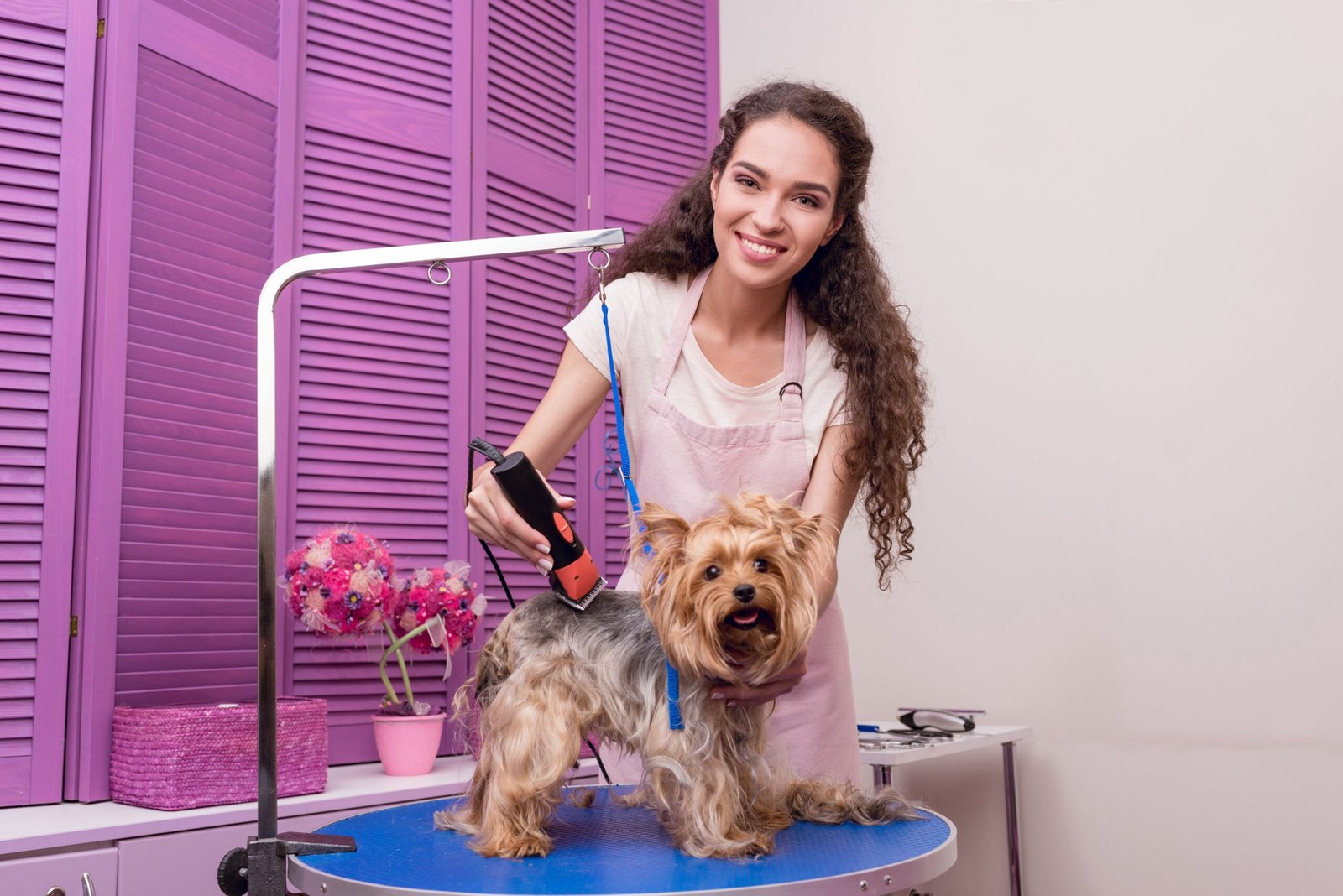
Introduction
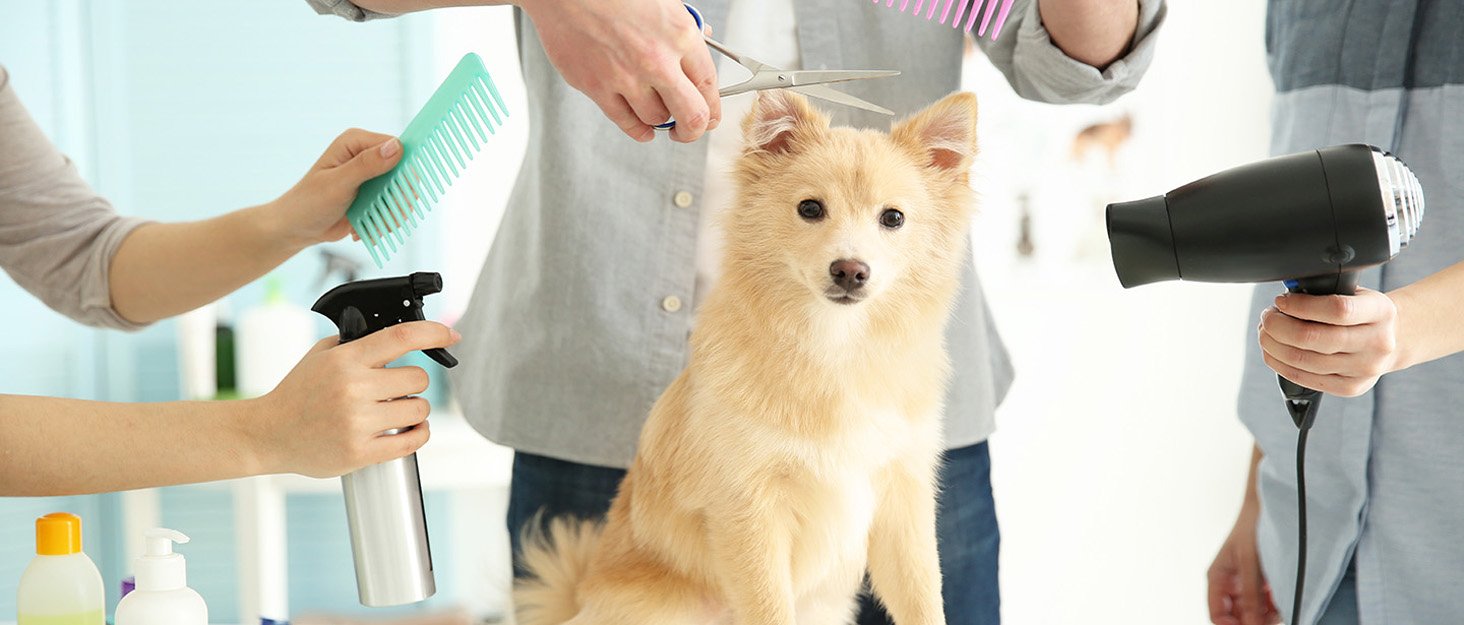
Dog grooming is an essential part of responsible pet ownership. Regular grooming not only keeps your dog looking neat but also contributes to their overall health and well-being. From brushing to bathing and nail trimming, each aspect of grooming plays a vital role in your dog’s comfort and hygiene.
For more information regarding 4 seasonal cxcercieses of all dog breeds recommended by the doctors and experts,you can visit our youtube channel:
Why Grooming is Important for Dogs

Regular grooming helps in:
- Maintaining a healthy coat and skin
- Preventing matting and tangling
- Reducing shedding and allergens
- Detecting early signs of infections, parasites, or skin conditions
- Strengthening the bond between the dog and owner
Grooming also improves a dog’s mood, as a clean and well-maintained coat can prevent discomfort and irritation.
Most Important Age Phases for Puppy Grooming
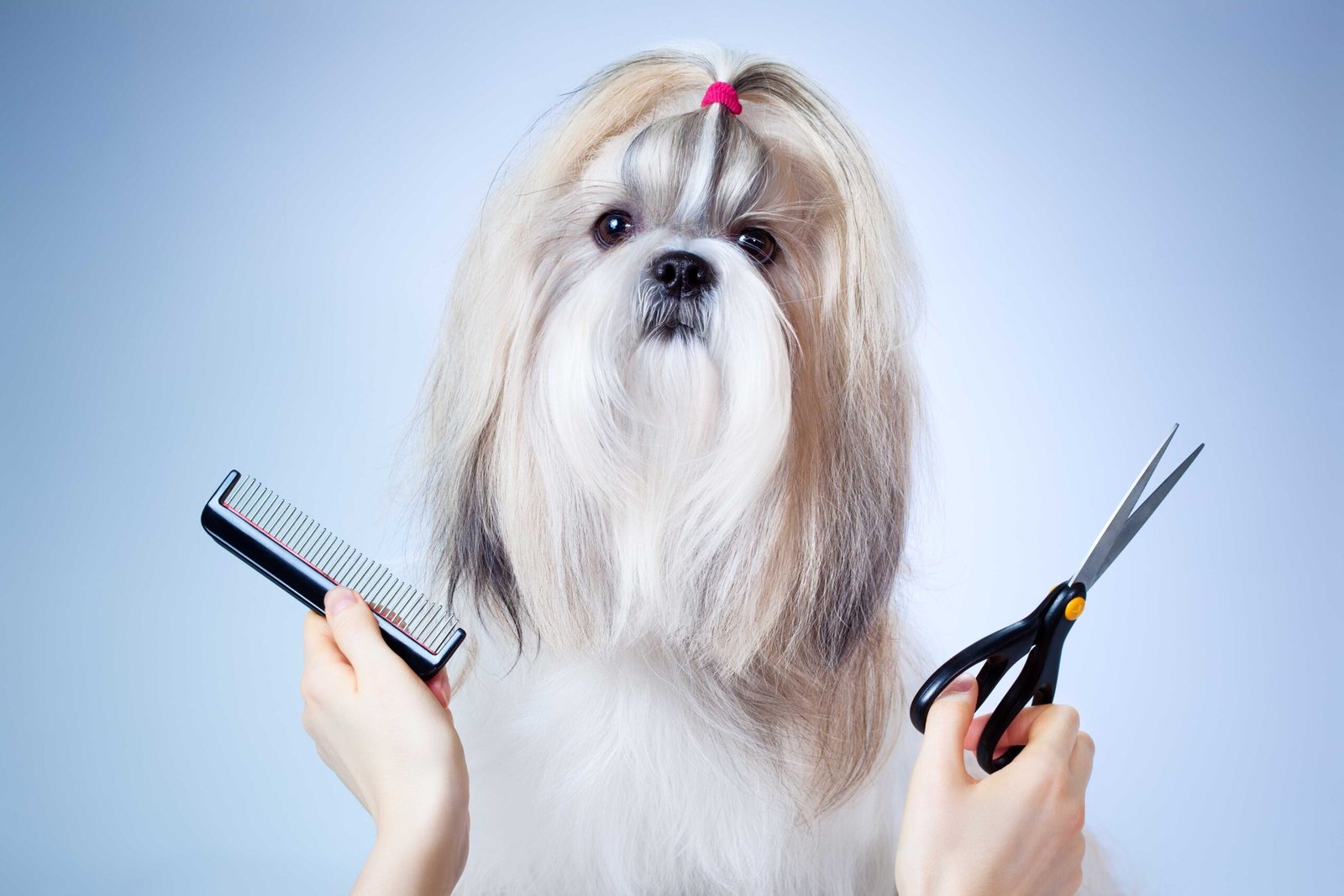
Grooming should start early to help puppies get comfortable with the process. Key age phases include:
3-4 Weeks Old:
- Start handling the puppy gently to get them used to touch.
- Introduce a soft brush to familiarize them with brushing.
6-8 Weeks Old:
- First bath using a mild puppy shampoo.
- Introduce nail trimming and ear cleaning in a gentle manner.
10-12 Weeks Old:
- First professional grooming session (for breeds needing frequent trims).
- Continue regular brushing and bathing routines.
- Begin using a toothbrush and dog-friendly toothpaste.
4-6 Months Old:
- Establish a regular grooming schedule, including coat brushing, bathing, and nail trimming.
- Accustom the puppy to clippers or trimming tools if necessary.
6+ Months Old:
- Full grooming routine should be in place.
- Regular visits to a professional groomer (if needed) to maintain coat health.
- Continue reinforcing positive grooming experiences.
Starting grooming early and maintaining consistency helps ensure a stress-free experience for both the puppy and the owner.
Most core and additional puppy vaccinations (such as DHPP, Rabies, and Leptospirosis) are not available for purchase on Amazon or other general online stores due to strict regulations. These vaccines must be administered by a licensed veterinarian because:
General Puppy Vaccination Schedule

| Age | Vaccine |
|---|---|
| 6-8 Weeks |
|
| 10-12 Weeks |
|
| 12-16 Weeks |
|
| 14-16 Weeks |
|
| 6 Months |
|
| 12-16 Months |
|
Essential Vaccinations by Country

| Country | Core Vaccines | Additional Vaccines |
| USA | DHPP, Rabies |
|
| UK | DHPP, Rabies |
|
| Canada | DHPP, Rabies |
|
| Australia | C3 (Distemper, Hepatitis, Parvovirus), Rabies |
|
| India | DHPP, Rabies |
|
| Germany | DHPP, Rabies |
|
| France | DHPP, Rabies |
|
Core vaccines protect against the most severe diseases, while additional vaccines are recommended based on location, lifestyle, and risk factors.
Essential Supplements for Puppies

Proper nutrition is vital for a puppy’s development, especially during grooming stages. Here is a list of essential liquid supplements based on age and gender.
Supplements by Grooming Age

| Age | Essential Liquid Supplements |
| 3-4 Weeks | Puppy milk replacer,
|
| 6-8 Weeks | DHA for brain development,
|
| 10-12 Weeks | Omega-3 fatty acids,
|
| 4-6 Months | Joint support (glucosamine),
|
| 6+ Months | Multivitamins, skin & coat enhancers |
Supplements for Male Puppies

| Purpose | Recommended Supplements |
| Muscle Development | Protein supplements,
|
| Joint & Bone Health | Calcium,
|
| Immune System Boost | Probiotics, colostrum |
| Energy & Stamina | Omega-3,
|
| Coat & Skin Health | Fish oil, biotin |
Supplements for Female Puppies

| Purpose | Recommended Supplements |
| Bone & Joint Strength | Calcium,
|
| Hormonal Balance | Omega-3,flaxseed oil |
| Skin & Coat Health | Fish oil, biotin |
| Digestive Support | Probiotics, digestive enzymes |
| Immune Boost | Colostrum, multivitamins |
Providing the right supplements ensures proper growth and overall well-being, making grooming easier and maintaining a healthy coat and skin.
Essential Grooming Products for Puppies
| Category | Recommended Products |
| Shampoo | Mild puppy shampoo,
|
| Brush | Soft bristle brush,
|
| Nail Clippers | Small guillotine or scissor-style clippers |
| Ear Cleaner | Dog-friendly liquid ear cleaner |
| Toothbrush & Paste | Puppy toothbrush, enzymatic dog toothpaste |
| Wipes | Hypoallergenic grooming wipes for quick clean-ups |
| Towel & Dryer | Absorbent towel,
|
| Flea & Tick Prevention | Puppy-safe flea & tick spray or shampoo |
| Detangling Spray | Leave-in coat conditioner for long-haired breeds |
| Paw Balm | Moisturizing balm for dry paw pads |
Using the right grooming products ensures a safe and enjoyable experience for both the puppy and the owner.
15 Grooming Secrets from Show Dog Experts
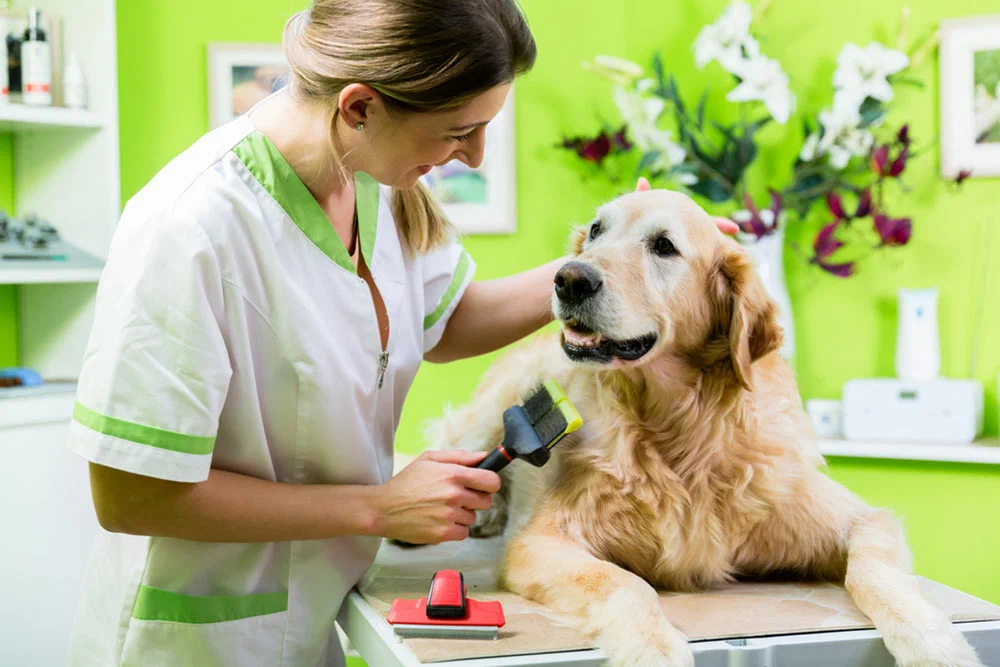
- Brush your dog daily to maintain a shiny, tangle-free coat.
- Use a high-quality shampoo suited for your dog’s coat type.
-
Condition the coat after shampooing to keep it soft and manageable.
-
Trim hair around the paws to prevent dirt buildup.
-
Use a leave-in spray to keep the coat hydrated.
-
Regularly clean your dog’s ears to prevent infections.
-
Trim nails carefully to avoid cutting the quick.
-
Use dog-specific wipes for quick touch-ups.
-
Apply paw balm to prevent cracking and dryness.
-
Keep teeth clean with dog-friendly toothpaste.
-
Brush in the direction of hair growth to avoid breakage.
-
Use a cool air dryer instead of a hot dryer to avoid skin damage.
-
Invest in high-quality grooming tools for the best results.
-
Practice positive reinforcement to make grooming a pleasant experience.
-
Maintain a consistent grooming routine for the best coat health.
Essential Dog Grooming Practices
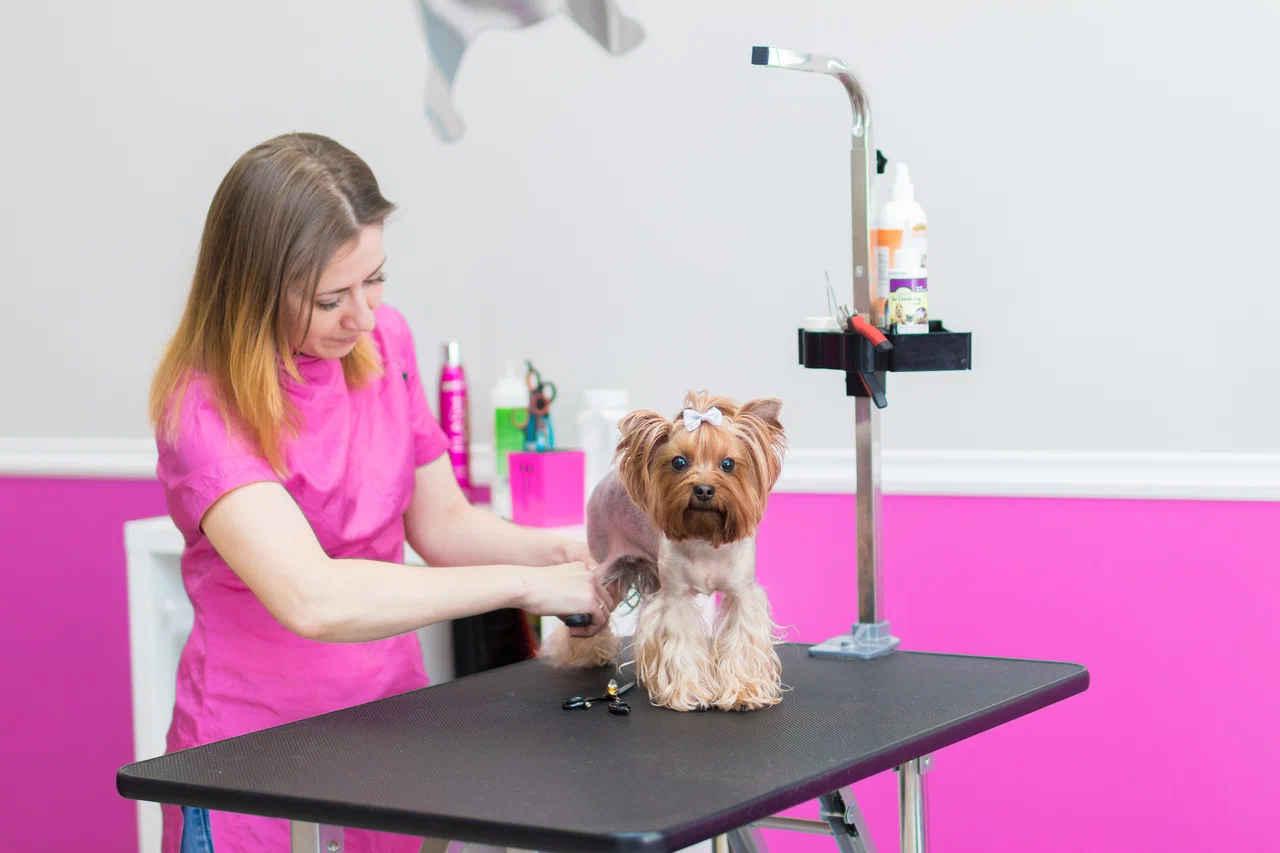
1. Brushing the Coat
Brushing is crucial for removing dirt, loose hair, and preventing tangles. The frequency and type of brush depend on the dog’s breed and coat type:
- Short-haired dogs ( Beagle, Boxer): Once a week using a bristle brush.
- Medium-haired dogs ( Golden Retriever, Border Collie): A few times a week with a slicker brush.
- Long-haired dogs ( Shih Tzu, Afghan Hound): Daily brushing with a pin brush and comb to prevent matting.
2. Bathing Your Dog
Bathing helps remove dirt, odor, and excess oils. However, excessive bathing can dry out a dog’s skin. The recommended frequency varies:
- Every 4-6 weeks for most dogs
- More frequent baths for dogs with skin conditions or allergies
Use a dog-specific shampoo to avoid skin irritation. Ensure you rinse thoroughly to prevent residue buildup.
3. Nail Trimming
Overgrown nails can cause discomfort and posture issues. Trimming should be done every 3-4 weeks using:
- Guillotine-style clippers for small to medium dogs
- Scissor-style clippers for large breeds
- Grinders for smooth and precise trimming
Avoid cutting too close to the quick (pink area inside the nail), as it can cause bleeding.
4. Ear Cleaning
Ear infections are common in dogs, especially those with floppy ears (e.g., Cocker Spaniel, Basset Hound). Clean the ears every 2-4 weeks using a vet-recommended ear cleaner and a cotton ball. Avoid inserting cotton swabs into the ear canal.
5. Dental Care
Good oral hygiene prevents gum disease and bad breath. Brush your dog’s teeth 2-3 times per week using dog-friendly toothpaste. Dental chews and professional cleanings also help maintain oral health.
6. Eye Cleaning
Some breeds ( Pugs, Bulldogs) are prone to tear staining. Wipe around the eyes daily using a soft, damp cloth or vet-approved eye wipes to prevent buildup.
Professional vs. At-Home Grooming

Some grooming tasks can be done at home, while others require professional assistance.
Professional grooming is recommended for:
- Breeds with complex coat types ( Poodles, Shih Tzus)
- Dogs that dislike being groomed
- Specific haircuts and styling needs
At-home grooming is suitable for regular maintenance and bonding time with your pet.
Dog Grooming Based on Coat Type
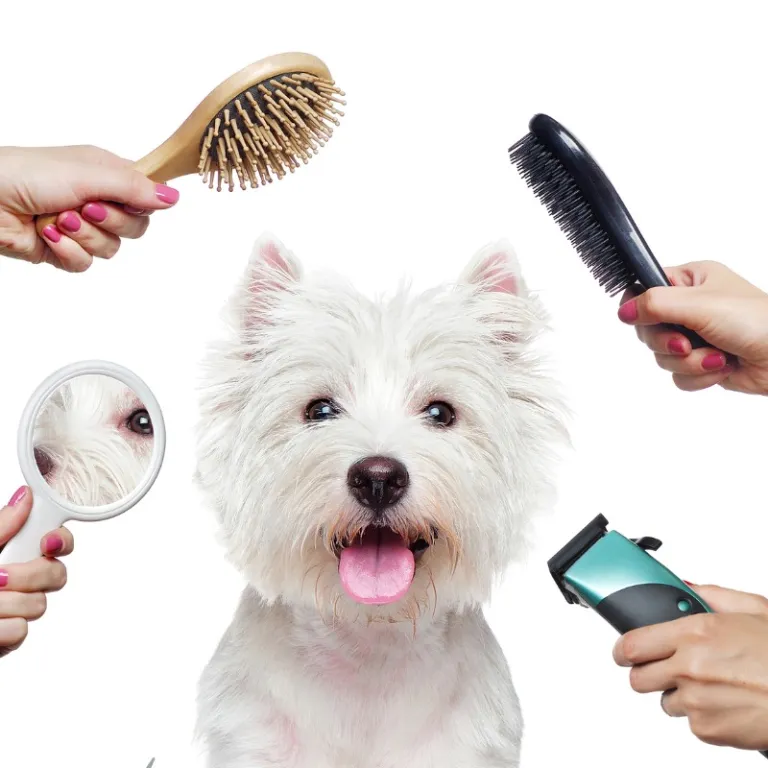
Different coat types require unique care:
1. Short-Coated Dogs
- Minimal grooming required
- Weekly brushing with a soft bristle brush
- Occasional baths
2. Double-Coated Dogs
- Heavy shedding (Siberian Husky, German Shepherd)
- Use a de-shedding tool during shedding season
- Do not shave double-coated breeds, as it affects insulation
3. Curly or Wavy-Coated Dogs
- Regular brushing to prevent matting (e.g., Poodles, Bichon Frise)
- Professional grooming every 4-6 weeks
4. Wire-Coated Dogs
- Hand-stripping may be necessary for breeds like Terriers
- Brushing weekly with a slicker brush
5. Long-Coated Dogs
- Daily brushing to prevent tangles
- Frequent trimming and baths
Common Grooming Mistakes to Avoid
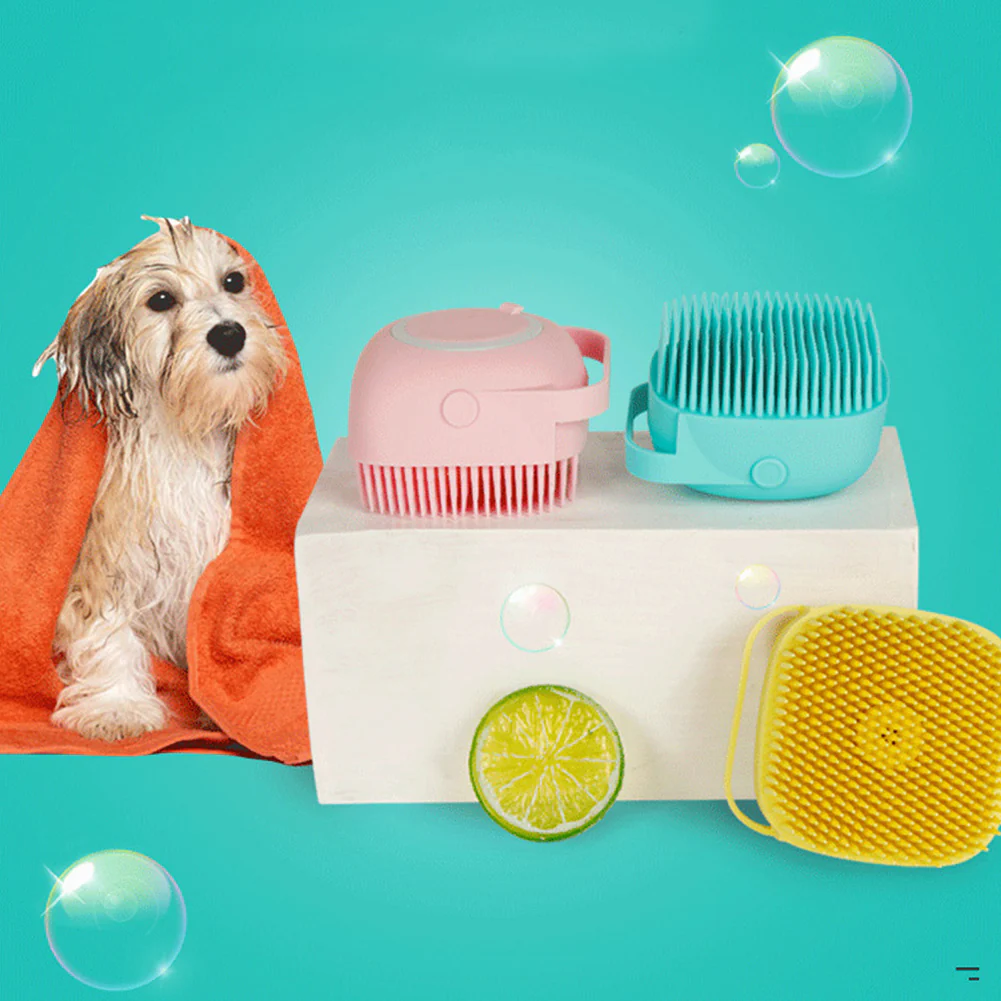
- Using human shampoo: It can disrupt a dog’s skin pH and cause irritation.
- Skipping ear checks: Leads to unnoticed infections.
- Not drying properly after a bath: Can cause fungal infections.
- Cutting nails too short: Risk of bleeding and pain.
- Over-bathing: Can lead to dry skin.
Closing Statement
Dog grooming is not just about aesthetics—it’s essential for your pet’s health and comfort. Establishing a consistent grooming routine will keep your dog happy, clean, and healthy. Whether you choose professional services or at-home care, maintaining your dog’s hygiene ensures a long and comfortable life.
For more expert dog care tips, visit DogsReader today!
Frequently Asked Questions (FAQs)
1. How often should I groom my dog?
It depends on the breed. Long-haired dogs need grooming every few days, while short-haired dogs may only need weekly brushing.
2. Can I use human shampoo on my dog?
No, human shampoos can be too harsh and disrupt your dog’s skin pH. Always use a dog-specific shampoo.
3. How do I prevent my dog’s coat from matting?
Regular brushing and using detangling sprays help prevent mats, especially in long-haired breeds.
4. When should I start grooming my puppy?
Begin handling and brushing at 3-4 weeks old, with full grooming routines starting by 10-12 weeks.
5. What if my dog is afraid of grooming?
Introduce grooming gradually, use positive reinforcement, and take breaks to make the experience pleasant.
Experts Nutritions
Low maintenance Dogs: Skin, Coat Care Guide

Understand The Topic

low maintenance dogs: Skin, Coat Care Guide Dogs come in all shapes, sizes, and coat types, each with its own unique care requirements. Understanding breed-specific coat and skin problems is crucial for maintaining a healthy, glossy coat and preventing common dermatological issues. This guide covers long-haired, short-haired, and breed-specific skin and coat care, including Spitz breeds, Toy breeds, Small breeds, Medium breeds, Large breeds, Giant breeds, Working breeds, Hound breeds, Terrier Breeds, and Unique & Rare breeds.
For more information regarding 4 seasonal cxcercieses of all dog breeds recommended by the doctors and experts,you can visit our youtube channel:
Low Maintenance Dogs: Easiest Breeds to Care For
| Breed | Coat Type | Grooming Needs | Exercise Requirement | Best For |
|---|---|---|---|---|
| Beagle | Short, smooth | Occasional brushing | Moderate | Families, apartments |
| Dachshund | Short or wire-haired | Low | Moderate | Small homes, minimal grooming |
| Chihuahua | Short or long-haired | Low (short coat) | Low | Apartment dwellers |
| French Bulldog | Short, smooth | Low | Low | Indoor living |
| Pug | Short, smooth | Low | Low to moderate | Families, seniors |
| Greyhound | Short, smooth | Very low | Moderate | Busy owners, minimal grooming |
| Whippet | Short, smooth | Very low | Moderate | Small yards, minimal shedding |
| Boston Terrier | Short, smooth | Low | Moderate | Urban living |
| Basenji | Short, fine | Very low | Moderate to high | Odorless coat, minimal barking |
| Italian Greyhound | Short, fine | Very low | Moderate | Allergy-friendly |
Vet-Recommended Medicated Shampoos by Breed Type Buy From Amazon

| Breed Type | Recommended Medicated Shampoo |
|---|---|
| Long-Haired | Vet’s Best Moisturizing Shampoo (Click Any link to Buy From Amazon) |
| Short-Haired | Douxo S3 PYO Antiseptic Shampoo |
| Spitz Breeds | FURminator deShedding Ultra Premium Shampoo |
| Toy Breeds | Burt’s Bees Hypoallergenic Shampoo |
| Small Breeds | Earthbath Oatmeal & Aloe Shampoo |
| Medium Breeds | Veterinary Formula Clinical Care Antiseptic Shampoo |
| Large Breeds | Zymox Enzymatic Shampoo |
| Giant Breeds | |
| Working Breeds | PawSafe 5-in-1 Dog Wash |
| Hound Breeds | Chlorhexidine Shampoo for Sensitive Skin
|
| Terrier Breeds | Vet’s Best Allergy Itch Relief Shampoo |
| Unique Breeds | TropiClean Hypoallergenic Shampoo |
Vet-Recommended Supplements by Breed Type Buy From Amazon

| Breed Type | Recommended Supplement |
| Spitz Breeds | Grizzly Salmon Oil (Click Any link to Buy From Amazon) |
| Toy Breeds | Zesty Paws Omega Bites |
| Small Breeds | VetriScience Skin & Coat Chews |
| Medium Breeds | Nutramax Welactin Omega-3 |
| Large Breeds | Zesty Paws 5-in-1 Multivitamin |
| Giant Breeds | Purina Pro Plan FortiFlora |
| Working Breeds | NaturVet Omega-Gold Plus |
| Hound Breeds | Vet’s Best Seasonal Allergy Chews |
| Terrier Breeds | Solid Gold SeaMeal Skin & Coat Supplement |
| Unique Breeds | Nutri-Vet Shed Defense Soft Chews |
”Ultimate Dog Breed-Wise Skin and Coat Care Guide” By understanding your dog’s unique coat needs, you can prevent skin issues before they arise. Keep their coat healthy, shiny, and problem-free with the right grooming, nutrition, and veterinary care. For more expert insights, visit DogsReader.com!
Long-Haired Dog Breeds: Skin and Coat Problems & Solutions

Common Issues:
- Matting and tangling
- Skin infections due to trapped moisture
- Hot spots
- Shedding and dander buildup
- Fleas and ticks hiding in dense fur
Solutions:
- Regular grooming: Brush daily with a high-quality slicker brush.
- Moisturizing shampoos: Use vet-recommended hydrating formulas.
- Skin inspections: Regularly check for hot spots and parasites.
- Professional grooming: Trim hair around sensitive areas.
- Omega-3 supplements: Promote coat shine and reduce skin inflammation.
Short-Haired Dog Breeds: Skin and Coat Problems & Solutions
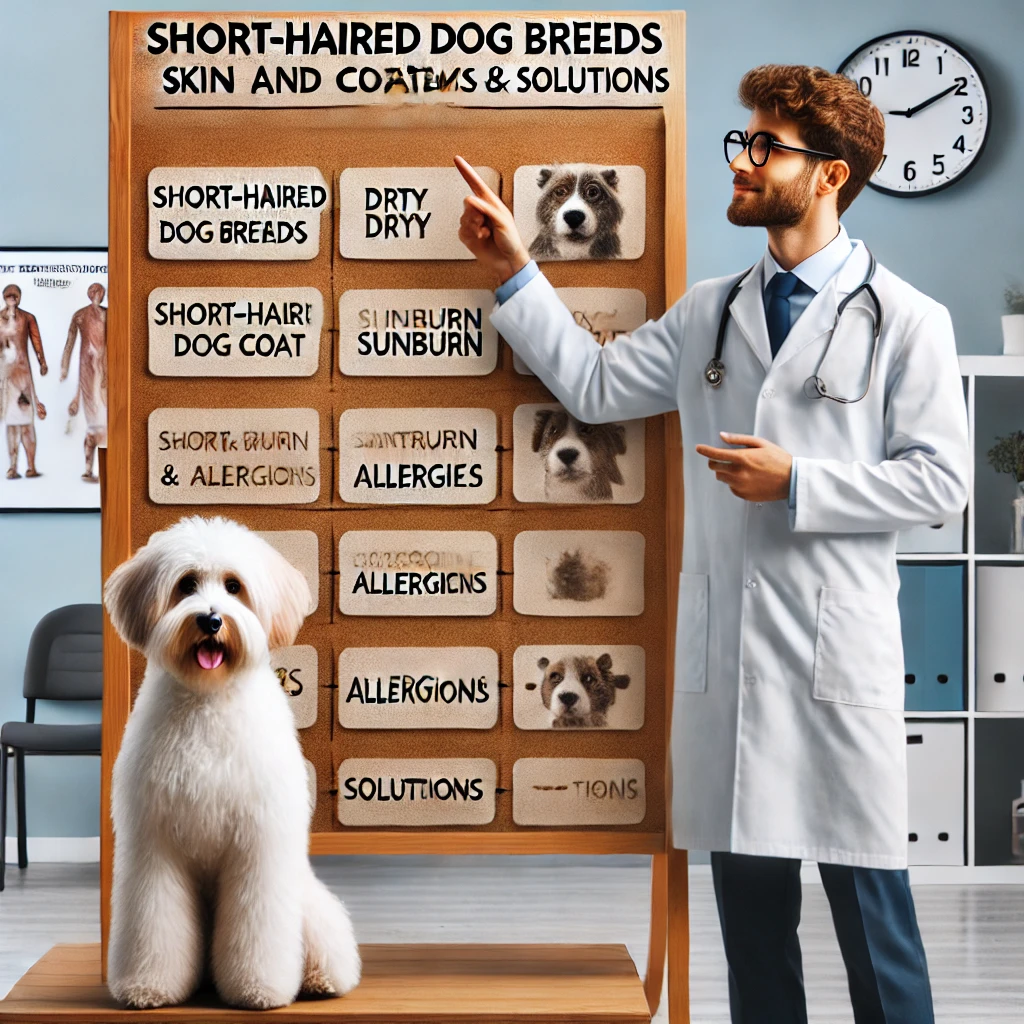
Common Issues:
- Dry, flaky skin
- Sunburn (especially in light-colored dogs)
- Allergies causing redness and itching
- Dull coat due to lack of moisture
- Increased risk of rashes and infections due to thin fur
Solutions:
- Moisturizing shampoos: Prevent flakiness and dryness.
- Sunscreen for dogs: Protect from UV damage.
- Hypoallergenic diet: Reduce allergy triggers.
- Regular bathing: Prevent buildup of allergens.
- Fish oil supplements: Enhance coat health and moisture balance.
Breed-Specific Skin and Coat Care Guide

Spitz Breeds ( Siberian Husky, Samoyed, Alaskan Malamute)

Issues:
- Heavy seasonal shedding
- Dense double coat prone to matting
- Dry skin due to harsh weather exposure
Care Tips:
- Daily brushing: Helps control shedding.
- Deshedding shampoos: Remove dead fur effectively.
- Humidifiers: Prevent dry skin in winter.
Toy Breeds (Chihuahua, Pomeranian, Yorkshire Terrier)
Issues:
- Fragile, thin coats prone to breakage
- Dry and sensitive skin
- Prone to dandruff and itching
Care Tips:
- Gentle shampoos: Avoid harsh chemicals.
- Coconut oil: Light application helps moisturize skin.
- Frequent but gentle brushing: Prevents breakage.
Small Breeds ( French Bulldog, Boston Terrier, Pug)
Issues:
- Prone to wrinkles trapping moisture (causing infections)
- Susceptible to allergies
- Dry, flaky skin
Care Tips:
- Wrinkle cleaning: Use vet-recommended wipes.
- Hypoallergenic diet: Reduce allergy flare-ups.
- Moisturizing balms: Keep skin hydrated.
Medium Breeds ( Cocker Spaniel, Border Collie, Australian Shepherd)
Issues:
- Prone to ear infections (especially long-eared breeds)
- High shedding levels
- Prone to fungal infections
Care Tips:
- Antifungal shampoos: Prevent skin infections.
- Regular ear cleaning: Prevent ear infections.
- Weekly deep brushing: Remove excess shedding.
Large Breeds (Labrador Retriever, Golden Retriever, German Shepherd)
Issues:
- Prone to hot spots and bacterial infections
- High shedding levels
- Prone to seborrhea (oily or dry skin condition)
Care Tips:
- Medicated shampoos: Treat bacterial infections.
- Omega-3 supplements: Reduce shedding and inflammation.
- Cooling mats: Reduce risk of hot spots.
Giant Breeds (Great Dane, Saint Bernard, Newfoundland)
Issues:
- Excess skin folds trapping bacteria
- Prone to pressure sores
- Prone to fungal infections
Care Tips:
- Regular cleaning of skin folds: Use antiseptic wipes.
- Orthopedic beds: Prevent pressure sores.
- Antifungal shampoos: Protect against infections.
Working Breeds ( Rottweiler, Doberman, Belgian Malinois)
Issues:
- Prone to cracked paw pads
- Sunburn risk for short-haired breeds
- Higher exposure to dirt and allergens
Care Tips:
- Paw balm application: Protect against cracking.
- Sunscreen for short-haired dogs: Prevent sunburn.
- Frequent bathing: Remove dirt and allergens.
Hound Breeds (Beagle, Bloodhound, Greyhound)
Issues:
- Sensitive skin prone to irritations
- Ear infections (especially in droopy-eared breeds)
- Thin fur leading to cold sensitivity
Care Tips:
- Hypoallergenic shampoos: Avoid skin reactions.
- Regular ear inspections: Prevent infections.
- Dog sweaters in cold weather: Maintain warmth.
Unique & Rare Breeds ( Xoloitzcuintli, Afghan Hound, Komondor)
Issues:
- Xoloitzcuintli (Hairless): Dry, acne-prone skin
- Afghan Hound: Prone to tangles and dullness
- Komondor: Dirt-trapping corded coat
Care Tips:
- Xoloitzcuintli: Regular moisturizing, sunscreen protection.
- Afghan Hound: Silk-protein shampoos for shine.
- Komondor: Special drying techniques to prevent mold in cords.
Frequently Asked Questions (FAQs)
1. How often should I bathe my dog to maintain healthy skin and coat?
It depends on the breed and skin condition. Generally, dogs should be bathed every 4–6 weeks, but breeds prone to skin issues may need more frequent baths with vet-recommended shampoos.
2. What is the best way to prevent shedding in heavy-shedding breeds?
Regular brushing, deshedding shampoos, and omega fatty acid supplements can significantly reduce shedding.
3. How do I treat dry skin in dogs?
Use moisturizing shampoos, omega-3 supplements, and increase humidity in your home. A vet may recommend additional treatments if the dryness persists.
4. Are human shampoos safe for dogs?
No. Human shampoos contain chemicals that can disrupt the pH balance of a dog’s skin, leading to dryness and irritation. Always use dog-specific shampoos.
5. Can diet affect my dog’s skin and coat health?
Yes. A balanced diet rich in omega-3s, vitamins, and high-quality protein promotes a healthy coat and reduces skin issues.
6. My dog has bald spots—what should I do?
Bald spots may be caused by allergies, parasites, infections, or hormonal imbalances. Consult a vet for a proper diagnosis and treatment plan.
7. What should I do if my dog is itching excessively?
”Ultimate Dog Breed-Wise Skin and Coat Care Guide” Check for fleas, allergies, or skin infections. Use vet-recommended shampoos and supplements, and consult a vet if itching persists.
Experts Nutritions
Diabetes in Dogs: Symptoms, Causes, Treatment, and Care

Understanding Diabetes in Dogs
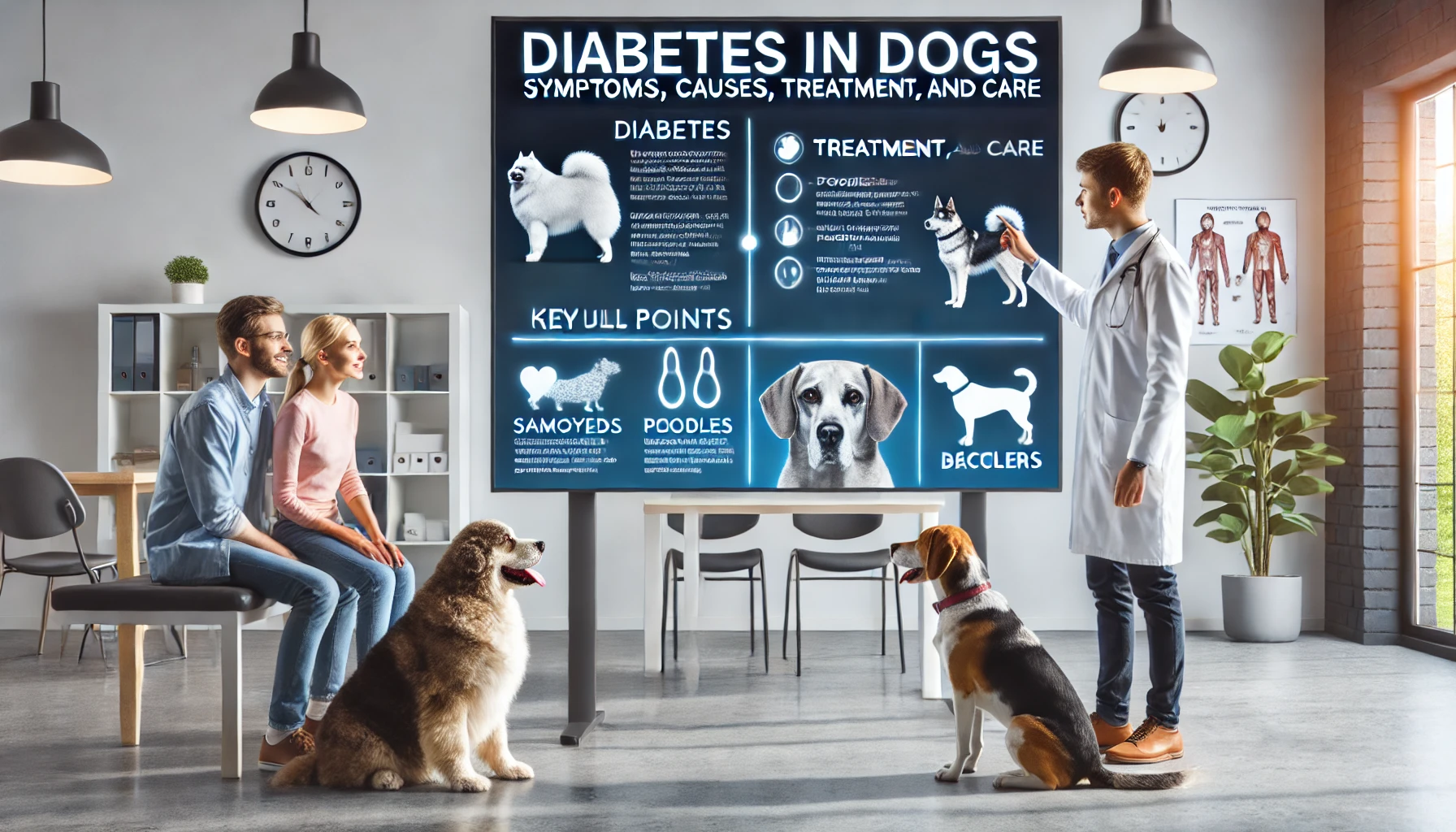
Diabetes in Dogs: mellitus is a serious but manageable condition that affects dogs, just as it does humans. It occurs when the body either does not produce enough insulin or cannot effectively use the insulin it produces. Insulin is essential for regulating blood sugar levels, and without it, sugar accumulates in the bloodstream, leading to various health complications.
For more information regarding 4 seasonal cxcercieses of all dog breeds recommended by the doctors and experts,you can visit our youtube channel:
Types of Diabetes in Dogs
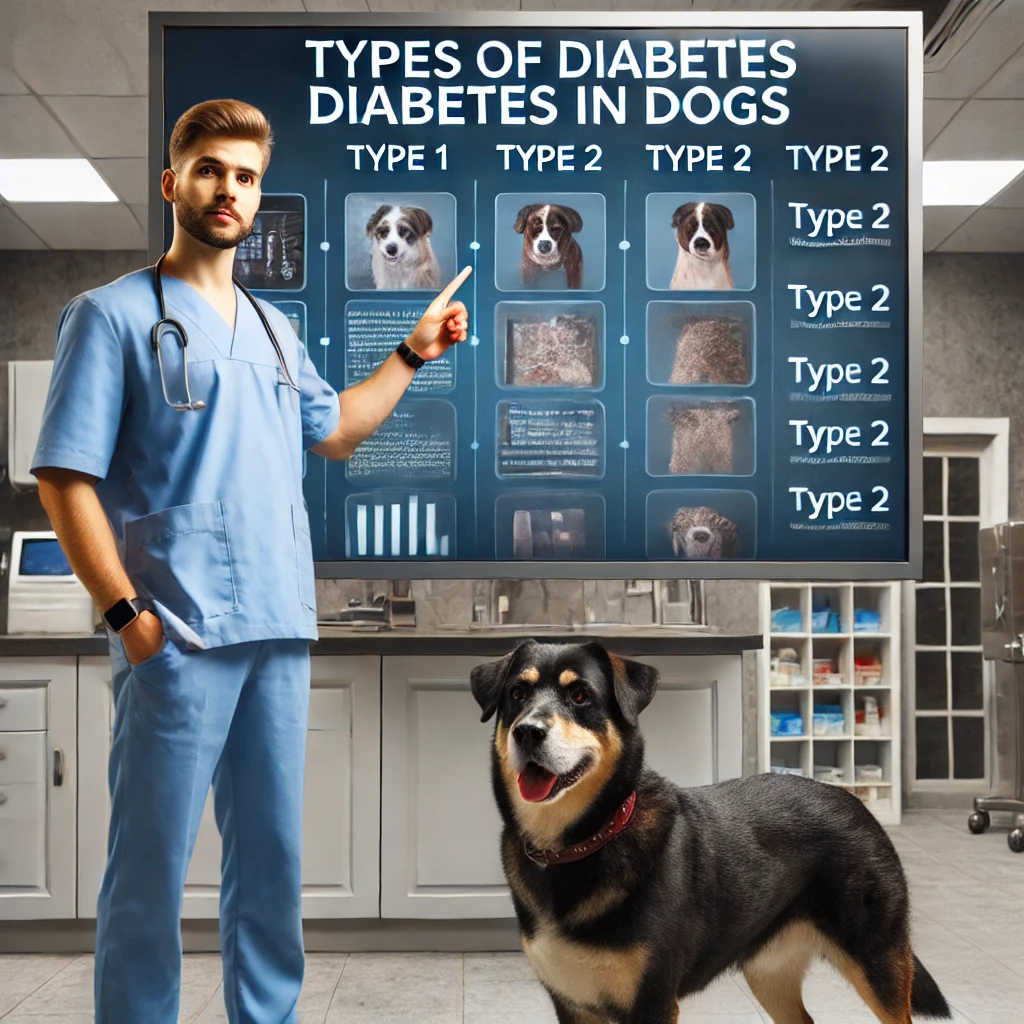
There are two primary types of diabetes in dogs:
- Type 1- Diabetes (Insulin-Dependent Diabetes Mellitus) –
- The most common type in dogs, caused by the immune system attacking insulin-producing cells in the pancreas. Dogs with this type require lifelong insulin injections.
- Type 2 – Diabetes (Non-Insulin-Dependent Diabetes Mellitus) –
- Less common in dogs but occurs when the body produces insulin but does not use it efficiently.
Common Symptoms of Diabetes in Dogs

Early detection is crucial for managing diabetes in dogs. Common signs include:
- Excessive thirst and increased urination
- Unexplained weight loss despite a good appetite
- Increased hunger or loss of appetite
- Lethargy and weakness
- Cloudy eyes or cataracts
- Frequent infections, particularly urinary tract infections
- Sweet-smelling breath (a sign of diabetic ketoacidosis in severe cases)
Causes and Risk Factors
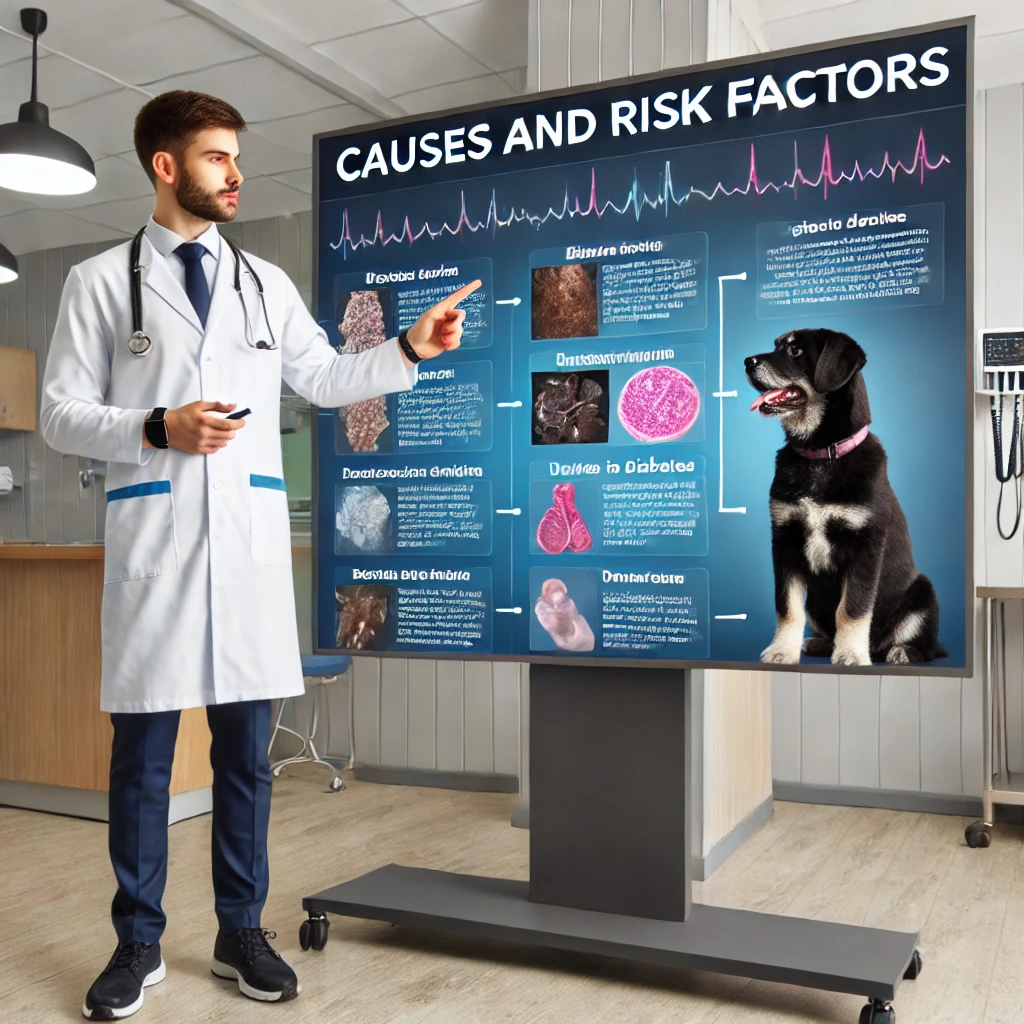
Several factors contribute to the development of diabetes in dogs, including:
- Genetics –
- Some breeds are more prone to diabetes, including Samoyeds, Poodles, Beagles, and Dachshunds.
- Obesity –
- Overweight dogs have an increased risk due to insulin resistance.
- Pancreatitis –
- Chronic inflammation of the pancreas can lead to insulin deficiency.
- Hormonal imbalances –
- Conditions like Cushing’s disease can interfere with insulin production.
- Certain medications –
- Long-term use of steroids can contribute to diabetes.
Most At-Risk Dog Breeds and Vet-Recommended Supplements

| Breed | Risk Level | Vet-Recommended Supplements |
|---|---|---|
| Samoyed | High | Omega-3 fatty acids,
|
| Poodle | High | L-carnitine,
|
| Beagle | High | Fiber supplements,
|
| Dachshund | High | Glucosamine,
|
| Golden Retriever | Moderate | Probiotics,
|
| Labrador Retriever | Moderate | Fiber,
|
| Miniature Schnauzer | High | Alpha-lipoic acid,
|
| Yorkshire Terrier | Moderate | Biotin,
|
Diagnosis of Canine Diabetes
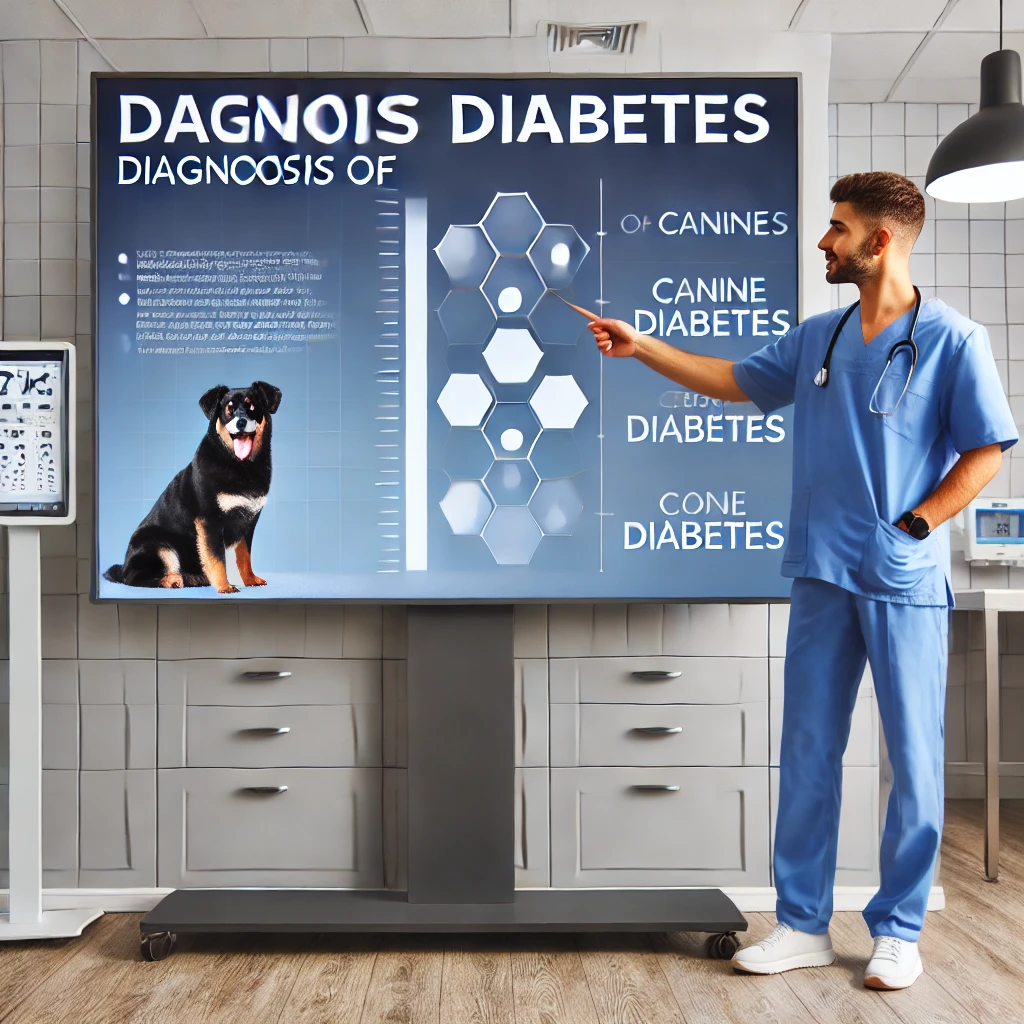
A veterinarian will diagnose diabetes through a combination of:
- Blood tests –
- High blood glucose levels are a key indicator.
- Urinalysis –
- The presence of glucose and ketones in urine can confirm diabetes.
- Physical examination and medical history –
- Evaluating symptoms and risk factors.
Treatment and Management

While diabetes in dogs is not curable, it can be managed effectively with the right approach:
- Insulin Therapy –
- Most diabetic dogs require daily insulin injections.
- Dietary Changes –
- A high-fiber, low-fat diet helps regulate blood sugar levels.
- Regular Exercise –
- Helps maintain a healthy weight and improves insulin sensitivity.
- Blood Sugar Monitoring –
- Regular glucose checks help track progress.
- Routine Veterinary Visits –
- Regular check-ups ensure proper disease management.
Potential Complications of Untreated Diabetes

If left untreated, diabetes can lead to severe complications, including:
- Diabetic ketoacidosis (DKA) –
- A life-threatening condition requiring emergency treatment.
- Cataracts and blindness –
- Many diabetic dogs develop vision loss over time.
- Neuropathy –
- Weakness in the limbs due to nerve damage.
- Organ failure –
- Chronic high blood sugar can damage the liver and kidneys.
Caring for a Diabetic Dog

Managing a diabetic dog requires commitment but can result in a good quality of life. Some key care tips include:
- Stick to a consistent routine for feeding and insulin injections.
- Avoid giving sugary treats or foods high in carbohydrates.
- Monitor your dog’s weight and adjust diet as needed.
- Ensure regular physical activity but avoid sudden changes in exercise levels.
- Be aware of signs of low blood sugar (hypoglycemia), such as shaking, confusion, and weakness.
Recent advancements in canine diabetes

Closing Statement

Diabetes in dogs is a manageable condition with proper treatment, diet, and veterinary care. By staying informed and maintaining a structured care plan, pet owners can help their diabetic dogs live happy and healthy lives. If you notice any symptoms of diabetes in your dog, consult a veterinarian immediately for diagnosis and management.
For more expert dog health tips, visit DogsReader or follow us on social media!
FAQs About Diabetes in Dogs

Q1: Can diabetes in dogs be cured?
A: No, diabetes in dogs is a lifelong condition, but it can be managed effectively with proper treatment, diet, and insulin therapy.
Q2: What is the life expectancy of a diabetic dog?
A: With proper care, a diabetic dog can live a normal lifespan. Regular monitoring and veterinary check-ups are key to maintaining health.
Q3: Can I manage my dog’s diabetes with diet alone?
A: No, most diabetic dogs require insulin therapy in addition to a proper diet and exercise regimen.
Q4: How often should a diabetic dog receive insulin injections?
A: Typically, dogs need insulin injections twice daily, but your vet will determine the best schedule for your pet.
Q5: What should I do if I miss my dog’s insulin dose?
A: If you miss a dose, consult your veterinarian for guidance. Never double the next dose to compensate.
Q6: Are certain dog breeds more prone to diabetes?
A: Yes, breeds such as Poodles, Beagles, Samoyeds, and Dachshunds have a higher risk of developing diabetes.
Q7: Can a diabetic dog still have treats?
A: Yes, but only healthy, vet-approved treats that do not spike blood sugar levels.
Q8: How can I tell if my dog’s blood sugar is too low?
A: Signs of low blood sugar include shaking, confusion, weakness, and seizures. If you notice these signs, provide a small amount of honey or sugar water and contact your vet immediately.
-

 SMALL DOG BREEDS4 months ago
SMALL DOG BREEDS4 months agoMerle Chihuahua: A Comprehensive Guide
-

 SMALL DOG BREEDS4 months ago
SMALL DOG BREEDS4 months agoMaltese: A Beloved Companion
-

 Large Breeds4 months ago
Large Breeds4 months agoSamoyeds Hypoallergenic: Closer Look at the Breed
-

 SMALL DOG BREEDS4 months ago
SMALL DOG BREEDS4 months agoMerle Pomeranian: A Adorable Companion
-

 Large Breeds4 months ago
Large Breeds4 months agoStandard Poodle Weight: Country Wise
-

 SMALL DOG BREEDS4 months ago
SMALL DOG BREEDS4 months agoYorkshire Terrier: a Big Personality
-

 MEDIUM BREEDS4 months ago
MEDIUM BREEDS4 months agoAmerican Water Spaniel Colors Chocolate In Crcols:
-

 Terrier Breeds3 months ago
Terrier Breeds3 months agoDog Breeds: by Country & Category
















